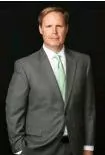For the past several years, examiners at the U.S. Patent and Trademark Office have been rejecting business-method patent applications that do not require the use of a computer or other electronic device using a rejection referred to as the "technological-arts rejection." According to the Patent Office, any claimed process that could be carried out without a computer is not patentable—regardless of novelty or non-obviousness—because the process is not tied to a known science or technology.
The top legal body within the Patent Office, the Board of Patent Appeals and Interferences (the "Patent Appeal Board"), recently evaluated this technological-arts rejection and found it inconsistent with existing federal law. As a result of the Patent Appeal Board’s decision in Ex parte Lundgren, Appeal No. 2003-2088 (Bd. Pat. App. & Inter. 2005), the Patent Office will no longer reject patent applications based on a technological-arts requirement. The practical impact of this decision is that business-method patent applications cannot be rejected solely because they recite method claims without requiring computer implementation. The Patent Office, however, will still evaluate these patent applications for novelty and non-obviousness.
Some have characterized the Patent Appeal Board’s decision as a "landmark" decision that could open a floodgate of new business-method patent filings. Others have gone so far as to say that the Patent Office’s decision may usher in a new era of business-method patent applications. While eliminating the technological-arts rejections will undoubtedly have some impact, suggestions proclaiming a new era of business-method patents may be overstated. Elimination of the technological-arts rejection does enable broader patent protection for a handful of companies. But how many companies take advantage of this broader protection and to what degree remains to be seen. And possibly more importantly, the Patent Office just issued a new set of examination guidelines that may be highly relevant to business-method patent applications. Depending upon their application, the guidelines could serve as a new barrier to protecting business-method inventions that do not require computer implementation.
The statutory subject matter requirement and the development of the technological-arts rejection
The Patent Appeal Board’s decision in Ex parte Lundgren focuses on the requirements of 35 U.S.C. § 101, which requires that all patent applications be evaluated to determine whether they claim statutory subject matter. This statutory-subject-matter requirement is a threshold requirement that identifies what types of inventions are eligible for patenting. Assuming that an invention falls within the statutory-subject-matter requirement, the Patent Office then evaluates the invention for novelty and non-obviousness.
As defined by Congress in 35 U.S.C. § 101, the types of inventions that satisfy the statutory-subject-matter requirement and, thus, that are eligible for patenting include processes, machines, manufactures, and compositions of matter. The Supreme Court has interpreted these requirements to encompass anything under the sun created by man—as long as the invention is novel and non-obvious. The Supreme Court has also held that laws of nature, physical phenomena, and abstract ideas are not proper subject matter and are not patentable. It has not carved out other exceptions.
In an effort to deal with the increased number of business-method patent applications, the Examiner Corps within the Patent Office developed its technological-arts test to determine whether an invention is directed to statutory subject matter. This test evaluated whether a claimed process was tied to any known science or technology. According to the Patent Office, a process (e.g., a method) that used a computer would be tied to a known technology and would satisfy the statutory-subject-matter requirement. But a process that did not recite the use of a computer would not be tied to a known technology and would not satisfy the statutory subject matter requirement.
Although examiners within the Patent Office have used the technological-arts test and the corresponding rejection for over four years, the test’s legitimacy was never evaluated by the judiciary or the Patent Appeal Board. Ex parte Lundgren presented the first legal evaluation of the technological-arts test, and the test did not fare well.
The facts surrounding Ex parte Lundgren
Carl Lundgren sought to patent a method for calculating a manager’s compensation based on a comparison between the manager’s company and comparable companies. Dr. Lundgren’s claims did not require the use of any type of computer or electronic device. Rather, Dr. Lundgren claimed a pure business method that could be carried out with paper and pen. Dr. Lundgren’s Claim 1 recited eight steps, which are paraphrased below:
- First step: choosing a performance standard for the manager;
- Second step: measuring the performance of the manager’s company with respect to the chosen performance standard;
- Third step: measuring the performance of comparable companies using the chosen performance standard;
- Fourth step: calculating a weighted average of the performance measures associated with the comparable companies;
- Fifth step: comparing the performance measures of the manager’s company with the weighted average of performance measures for the comparable companies;
- Sixth step: determining a relative performance measure for the manager’s company;
- Seventh step: determining the managerial compensation amount derived from the relative performance measure; and
- Eighth step: paying the manager.
The Patent Office originally rejected Dr. Lundgren’s claims because they were allegedly directed to non-statutory subject matter. According to the examiner handling the case, "both the invention and the practical application to which it is directed [are] outside the technological arts, namely an economic theory expressed as a mathematical algorithm without the disclosure or suggestion of computer, automated means, apparatus of any kind."
Disagreeing with the examiner’s rejection, Dr. Lundgren sought review by the Patent Appeal Board, which sided with Dr. Lundgren and reversed the examiner. The Patent Appeal Board, in a 3-to-2 decision, held that a separate technological-arts test is not judicially recognized and that any rejection based on the test is improper. According to the Patent Appeal Board, Dr. Lundgren sought to protect a process, and a process expressly falls within the categories listed by Congress as proper statutory subject matter. The Patent Appeal Board, however, did not rule on the novelty or non-obviousness of Dr. Lundgren’s invention.
The future of the technological-arts rejection
Decisions by the Patent Appeals Board are binding upon the Patent Office and its Examiner Corps. Accordingly, the Patent Office can no longer use the technological-arts test for evaluating whether an invention is directed to statutory subject matter. But decisions by the Patent Appeals Board are not binding on the federal judiciary—meaning that a federal court could determine that the technological-arts test is legitimate and use it to evaluate the validity of issued patents.
It should be noted that the Patent Appeal Board only rejected the technological-arts test by a 3-to-2 decision. Accordingly, the Examiner Corps may be able to develop a new test for evaluating business-method inventions that will pass the Patent Appeal Board’s scrutiny. And the Examiner Corps may be well on its way to doing just that.
Shortly after the Patent Appeal Board decided Ex parte Lundgren, the Examiner Corps announced new guidelines for evaluating whether claimed inventions are proper statutory subject matter. These new guidelines appear to be well grounded in Federal Circuit and Supreme Court law. And on their face, the new guidelines appear to support the patenting of business methods—whether or not they recite the use of a computer. But the new guidelines leave room for interpretation and open new opportunities for examiners to reject business-method inventions. It will take six months to a year before practitioners know exactly how the new guidelines and Ex parte Lundgren will coexist. Look for a new Cooley Alert on the topic.
The content of this article is intended to provide a general guide to the subject matter. Specialist advice should be sought about your specific circumstances.



